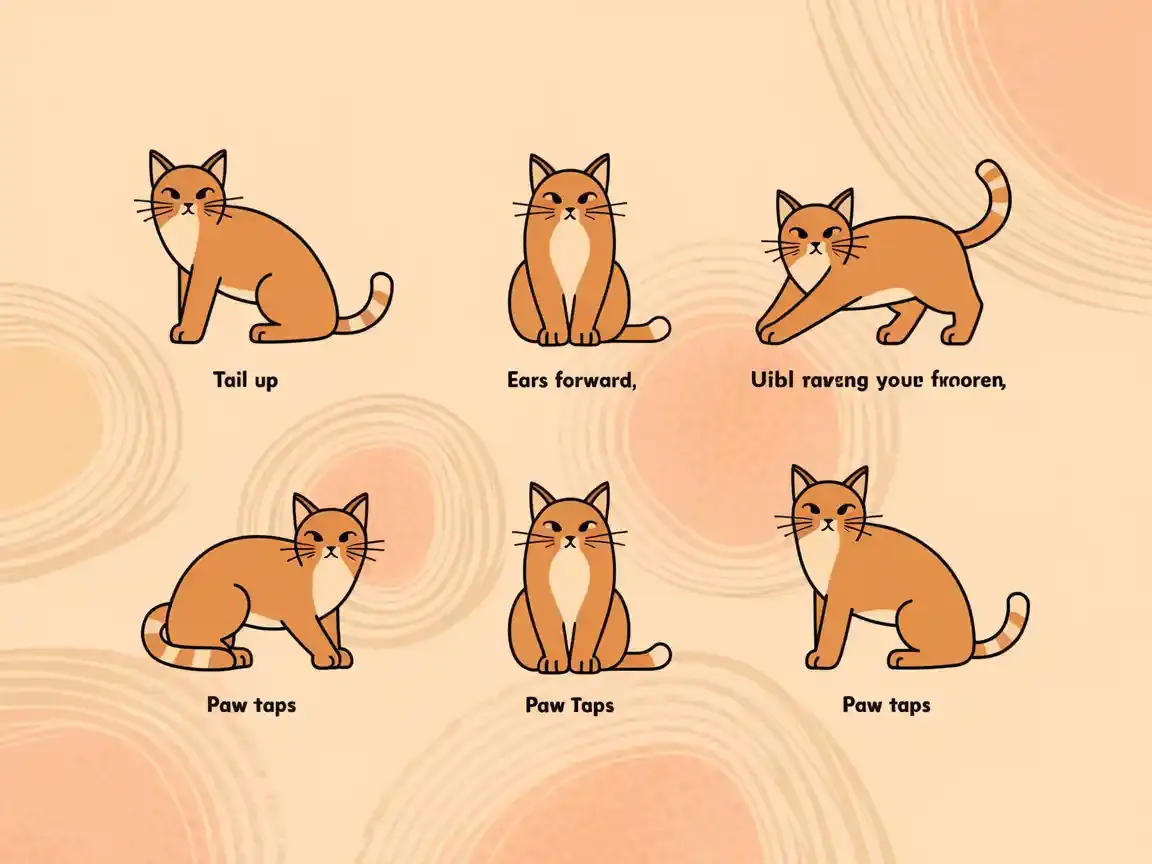Cats are mysterious, independent, and full of subtle signals that often go unnoticed. Cats communicate through more nuanced behaviors unlike dogs, who wear their emotions on their tails. This, sometimes, makes them seem aloof or unpredictable.
For new pet parents and even seasoned cat lovers, decoding feline behavior can feel like trying to solve a riddle. Why did she knock the glass off the table? What does that slow blink mean? And is that tail flick a good or bad thing?
Understanding your cat’s body language and behavioral cues is essential for building a stronger bond and being more aware of their needs to get timely mobile cat grooming in Abu Dhabi.
Once you learn to interpret these subtle messages, your cat’s world becomes much easier to navigate and far more rewarding.
Let’s break down seven key signs your cat is trying to communicate with you and what they mean.
1. Slow Blinking: The Cat Kiss
Have you ever noticed your cat looking at you and blinking slowly? This isn’t just sleepy behavior; this is feline affection. A slow blink from a cat is often referred to as a “cat kiss” and is their way of showing trust and love.
Cats don’t usually close their eyes in the presence of someone they don’t feel safe around. So, if your kitty gives you that gentle, dreamy-eyed blink, return the favor. It helps strengthen your bond and reassures them that the feeling is mutual.
2. Tail Movements: The Emotional Barometer
A cat’s tail is a fantastic emotional barometer. A raised tail with a slight curve means your cat is happy and confident. A puffed-up tail? That means your cat is frightened or trying to appear larger and more intimidating.
Rapid tail flicking usually signals agitation or overstimulation, especially during petting. If your cat’s tail is tucked between its legs, it might be scared or submissive. Learning to read tail language can help you avoid unwanted swipes or scratches and better understand how your cat is feeling.
3. Purring: Not Always a Sign of Happiness
We often associate purring with contentment, and many times, it is. But cats also purr when scared, in pain, or trying to soothe themselves. It’s a self-regulating behavior that can indicate anything from joy to distress.
If your cat is purring while hiding under the bed or during a vet visit, it may be their way of calming down. Pay attention to context: combine the purring with other body signals like ear position, eyes, and tail movement to get the full picture.
4. Kneading: A Sign of Comfort and Territory
When your cat kneads you with their paws (sometimes nicknamed “making biscuits”), it’s often a throwback to kittenhood. Kittens knead their mothers to stimulate milk flow, so the behavior in adult cats typically indicates comfort, relaxation, and affection.
However, kneading can also mark territory, as cats have scent glands in their paw pads. If your cat is kneading you, they’re likely saying, “You’re mine” in the most adorable way possible.
5. Ears and Whiskers: Subtle Yet Telling
Cats have incredibly expressive ears and whiskers that offer key insights into their mood. Ears pointed forward usually mean alertness or curiosity. Flattened ears often indicate fear, aggression, or high stress.
Similarly, relaxed whiskers signal a calm cat, while whiskers pulled back tight against the face are signs of anxiety. When the ears and whiskers are stiff and forward, your cat might be in hunting mode or deeply focused on something.
6. Exposing the Belly: Trust With a Catch
It’s a common misunderstanding: your cat rolls over and shows its belly, so you go in for a rub, only to be met with bunny kicks or claws. Exposing the belly is a huge sign of trust, as the stomach is vulnerable.
However, it doesn’t always mean “pet me.” Sometimes, it’s just your cat’s saying, “I feel safe around you.” If they truly want belly rubs, they’ll stay relaxed and purr if they tense up when you reach in, back off to avoid miscommunication.
7. Vocalizations: From Meows to Chirps
Cats use a wide range of vocal sounds to communicate with humans—far more than they use with other cats. A short meow might be a greeting, while a long, drawn-out one could indicate hunger or demand for attention.
Chirps and trills often show excitement or curiosity, especially when watching birds out the window. A low growl or hiss means “back off.” Learning your cat’s unique sound library takes time, but conversations become much easier once you understand their vocal cues.
How to Respond When Your Cat Is Trying to Communicate
Recognizing the signs is only half the job. What you do with that information is where real bonding happens.
If your cat is giving you slow blinks, take a moment to return the gesture to make it a mutual exchange of trust. When your cat’s tail starts twitching, or their ears go flat, give them space. These signals aren’t personal; they just let you know their boundaries.
When your cat kneads you or lies belly-up, offer a calm presence instead of aggressive affection. If they seek more interaction, they’ll come closer. Also, be observant of vocalizations indicating hunger, boredom, or needing a litter box change or clean-up.
Most importantly, always respect your cat’s comfort zone. Pushing interaction when a cat shows signs of stress or overstimulation can damage trust. Instead, reward calm behavior, create safe zones, and provide enriching playtime to encourage open communication in the future.
Conclusion
Cats are not mysterious, just for the sake of it. Their communication is subtle, intentional, and rooted in instinct. Once you learn to read the signs, whether it’s a twitching tail, a slow blink, or a kneading paw, you’ll find that your cat has been talking to you all along.
The more you pay attention, the clearer the message becomes.
Understanding your cat’s behavior transforms your relationship into something deeper and more intuitive. You’ll not only meet your cat’s needs better, but you’ll also build a bond based on mutual trust and respect.
Give Your Cat the Care They Deserve with Jack Pet Grooming
At Jack Pet Grooming, we understand that every cat has a unique personality and grooming needs. Whether your feline friend is shy, bold, or somewhere in between, our trained professionals handle them carefully to offer premium pet grooming in Abu Dhabi.
We speak your cat’s language from brushing and bathing to nail trims and deshedding treatments. Book your appointment today and treat your cat to the care they deserve.

